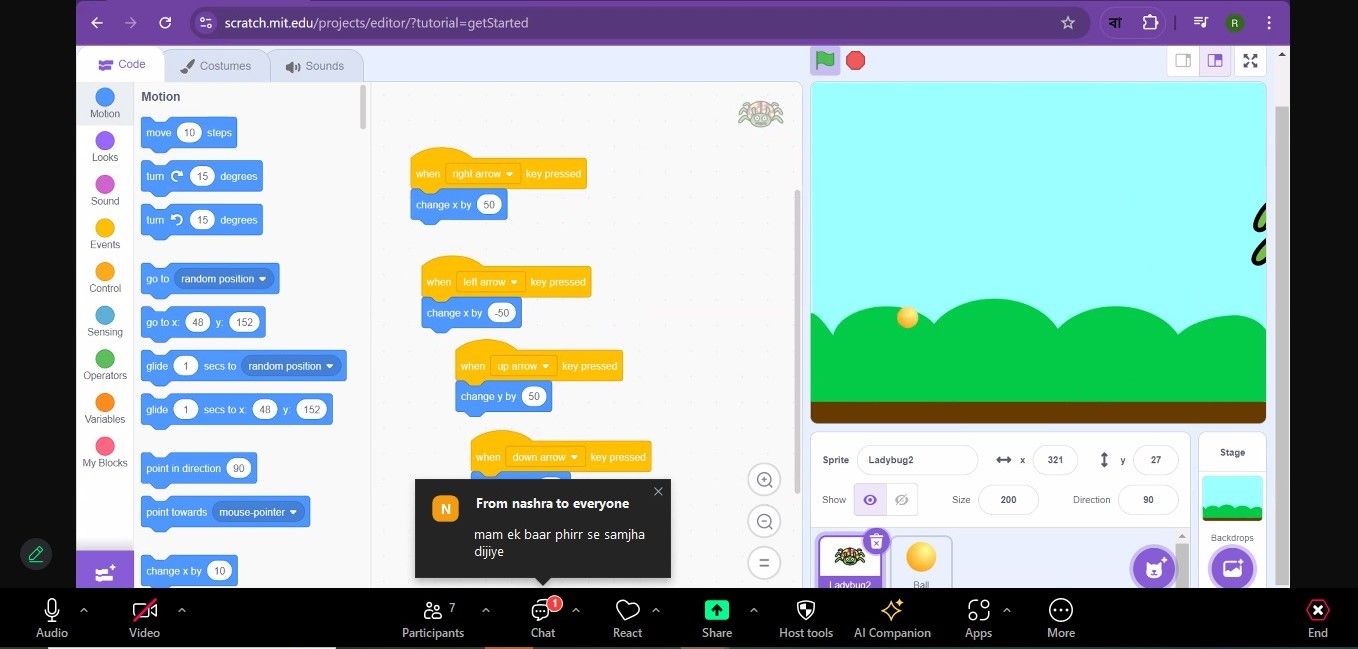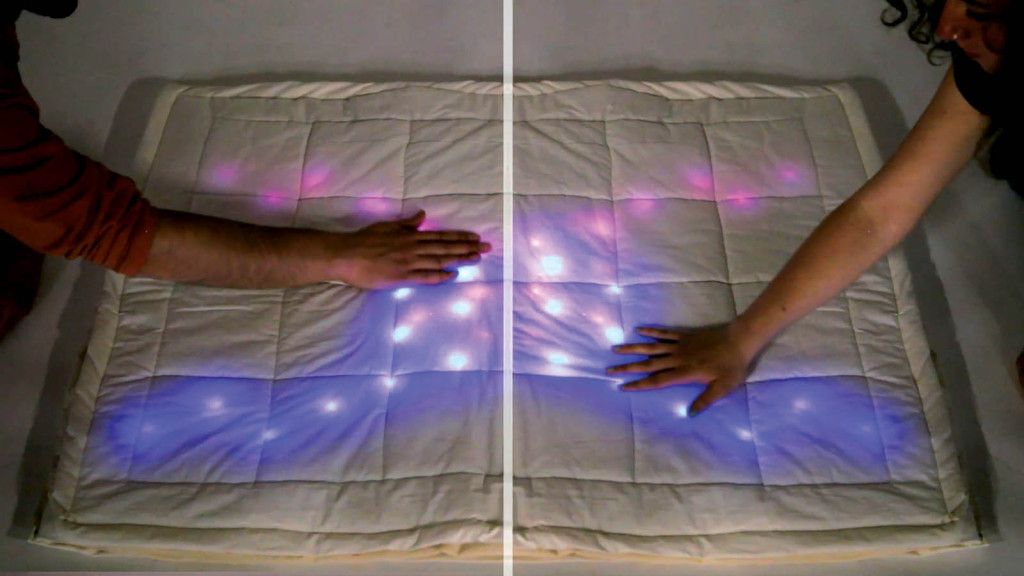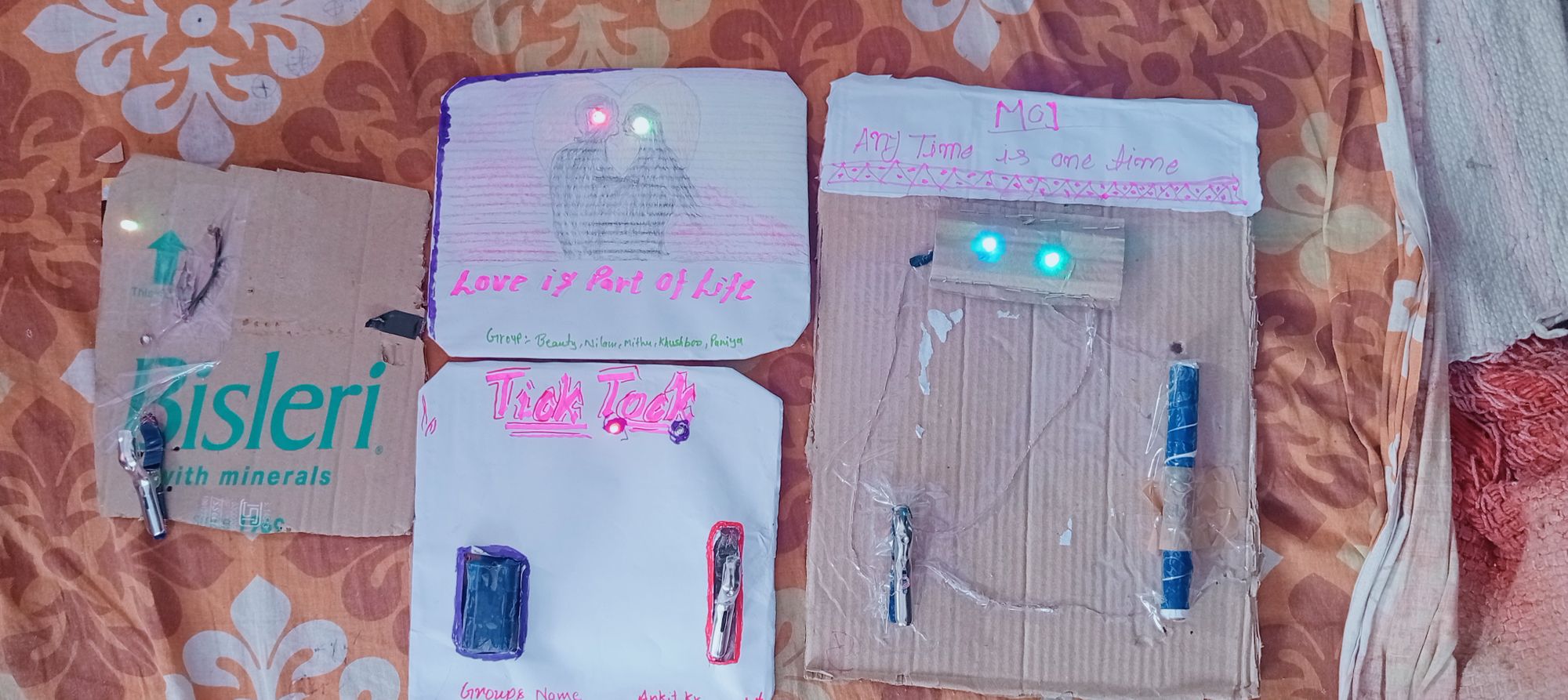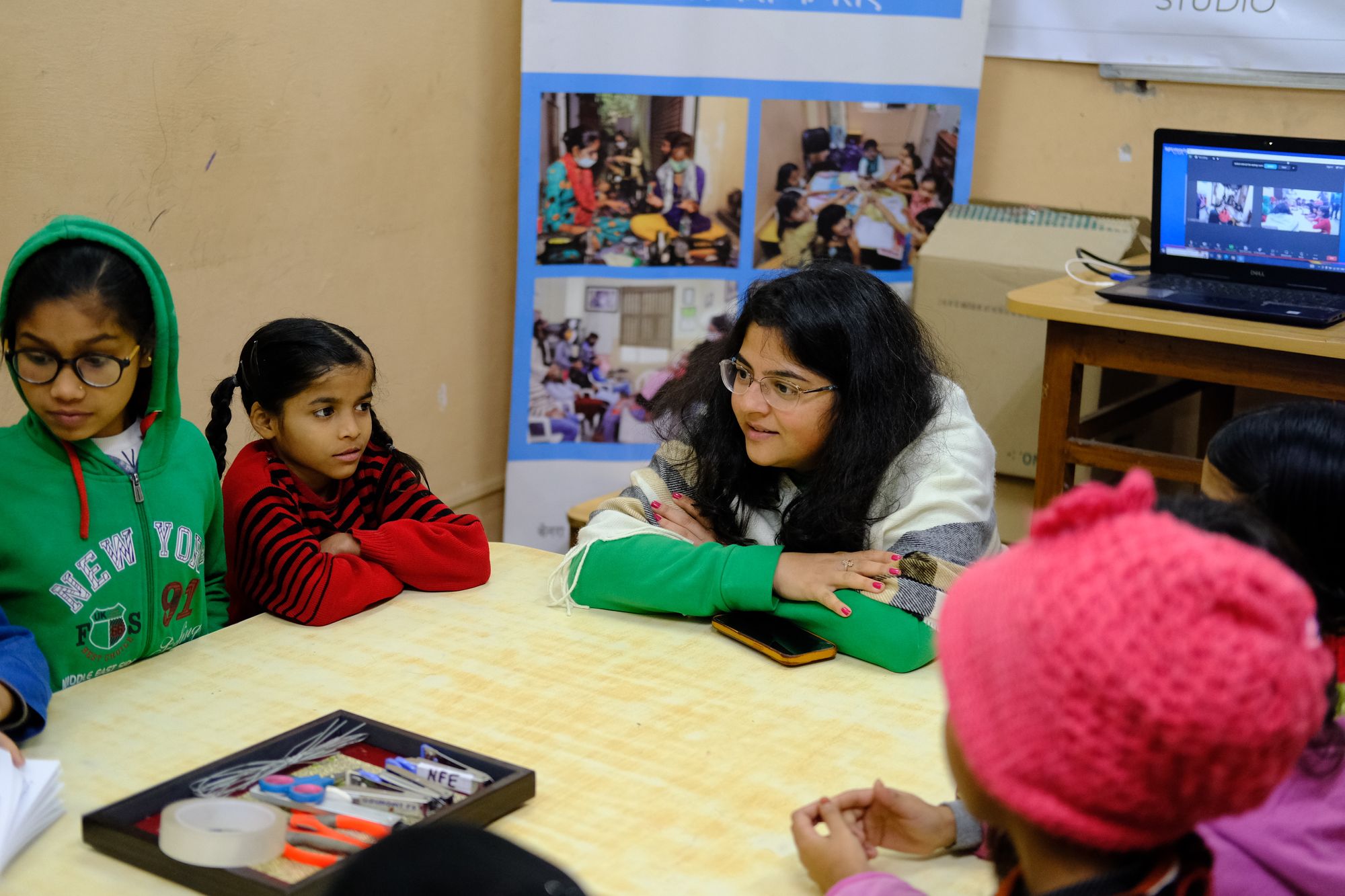Since its inception, Unstructured Studio has been invested in making STEAM-based creative learning experiences more accessible to the underserved in India. Over the course of nearly three years, we have taken over 30+ workshops, both with children and educators. We wanted to compile some ideas and thoughts for STEAM-related education for K-12 educators to take inspiration from.
Coding for beginners: This is an excellent way to initiate children into coding through Scratch, a free online platform developed by the MIT Media Lab that integrates coding with creativity. Scratch uses a high-level, block-based visual programming language, making it accessible and engaging for children by allowing them to drag and drop code blocks to create interactive stories, games, and animations. Recently, we conducted the first of a series of workshops with the youth at Amba Foundation, introducing them to this innovative platform. One example of an activity we used to engage the children was creating an interactive story. Each child selected characters (sprites) and backgrounds, then used code blocks to animate their characters, making them move, talk, and respond to different events. This activity not only introduced them to fundamental coding concepts but also encouraged them to think creatively and logically. The tool can be explored further here: Scratch.

Smart Textiles: This is another interesting STEAM concept that you can introduce children to is Smart Textiles. They are fabrics integrated with an electronic component for improved functionality for the wearer. Though not commonplace yet in India, smart clothing is used quite extensively in the Western hemisphere through smart hospital gowns, heated socks etc. Smart textiles offer versatile applications across industries such as fashion, healthcare, sports, and transportation. This can become a very interesting activity to facilitate with the learners. For example, they can be asked to create a glowing glove replicating Iron Man’s glove using old gloves and LED lights.

Libraries as agents of change: Libraries can become agents of change in STEAM education by transforming into hubs of hands-on learning and innovation. By offering maker spaces equipped with tools for coding, robotics, and 3D printing, libraries provide community members with access to resources that foster creativity and critical thinking. Collaborating with local schools and organizations, libraries can host workshops, competitions, and events that spark interest in STEAM fields among children and adults alike. For example, an interesting approach is to keep a LEGO set, or a similar building block set, which the children can freely use to create. You can simply ask them to build a specific thing, without giving them any more instructions, and then watch their creations unfold.
Using low-cost resources: In underserved settings, acquiring the materials needed for a high-end tinkering workshop can be challenging. However, creativity and resourcefulness can turn low-cost, readily available materials into engaging and educational projects. Items like cardboard, paper, string, tape, bottle caps, and recycled electronics can be repurposed to create innovative and functional prototypes. For instance, children can use cardboard to construct simple machines, such as levers and pulleys, to understand basic mechanical principles. Paper circuits, made with conductive tape, LEDs, and batteries, can introduce them to basic electrical concepts without the need for expensive equipment. This approach not only makes STEAM education accessible to all but also encourages students to think critically about the resources they have at hand, fostering innovation and resilience. You can find more such activities here: https://kriti.unstructured.studio/

Facilitation tips:
Social Emotional Learning (SEL) and STEAM: Instilling resilience in learners is crucial for their success in the rapidly evolving STEM landscape. As AI and other emerging technologies reshape the job market, it's not enough for students to possess only technical skills; they must also develop essential soft skills. These include adaptability, problem-solving, communication, and collaboration, which are vital for navigating complex and changing work environments. By fostering a growth mindset, educators can help students view challenges as opportunities for learning rather than obstacles.
Classroom as safe spaces: It’s important to ensure that students feel comfortable in a classroom and can call it their safe space. You can build classrooms as compassionate spaces through soft lighting, white noises/ soft music, different sensory outlets for students such as building a small zen garden or designating a corner as a “chill spot” where students can relax if they feel anxious, creating flexible seating or having enough space for them to move around and opportunities of self-expression. An example of could be designating one day of the week as a maker day. Students can be given a variety of materials and tasked to make something with them in groups. A few examples would be, aromatherapy candles, beaded necklaces, doodling, building blocks etc. This can help them strengthen their collaboration skills and unleash their creativity.
Introduction and Icebreakers: If you are meeting with your students/ workshop participants for the first time, it’s always a good idea to start with a small round of introduction followed by an icebreaker. You will find lots of good ideas for icebreaker activities, but a few tried and true ones that I always use are getting together a few simple riddles for them to solve, or asking them what they will do if they win x amount in a lottery. The answers that come up are really interesting.
Guide, don’t Instruct: STEAM learning puts the focus on igniting creativity and curiosity among the learners, and making them understand difficult concepts through the process of making, rather than rote learning. To this extent, a good tip would be to guide them through a process, instead of setting clear instructions and boundaries. For example, instead of telling students exactly how to build a specific model or solve a problem, you might ask open-ended questions that lead them to consider different possibilities or alternative methods. This way, learners take ownership of their learning experience, develop problem-solving skills, and build confidence in their abilities.

